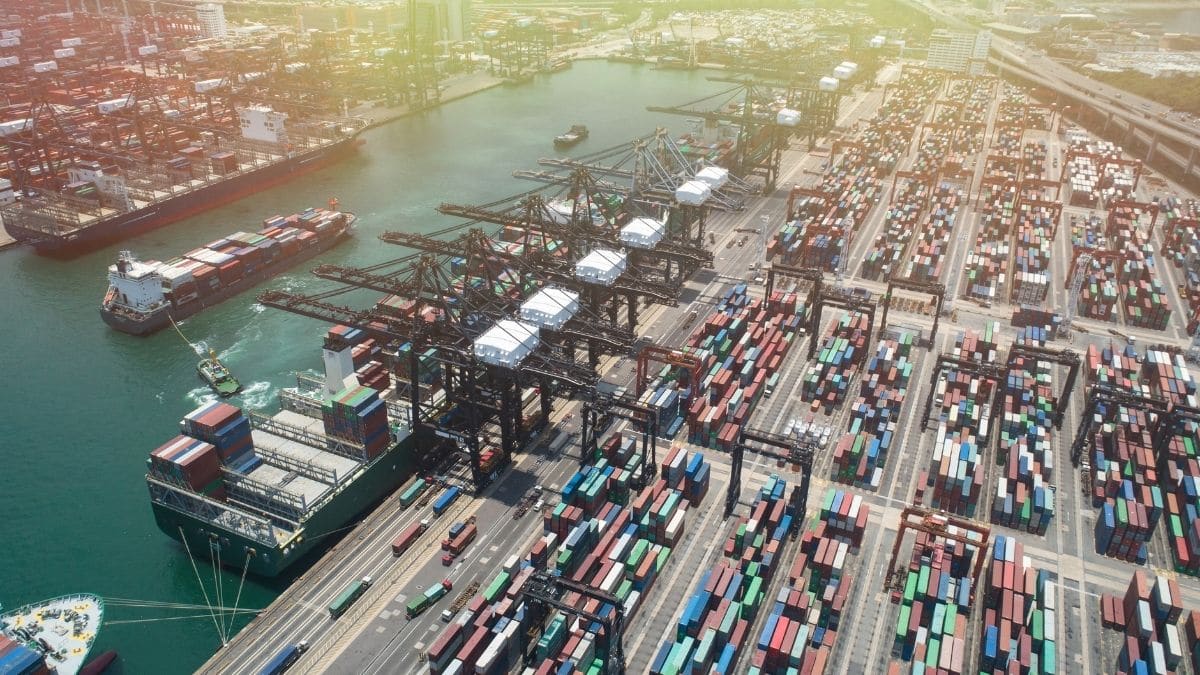Briefly, an industry value chain is a physical representation of the various processes involved in the production of goods (and services), from raw materials to the final product (also known as the supply chain). The value chain itself is known to have involved a lot of processes, hence it will be better to get a reliable ERP system to help speed up the process.
A good ERP system could help accelerate the tricky procedures of an industry value chain. Another thing involved in the process is the industry value chain analysis. The analysis frequently entails internally examining company practices and planning how to optimize them to create value for customers.
The examination process can be helped by integrated ERP software. The industry value chain enables an industry-wide analysis that can shed light on business activities such as mergers and acquisitions and the funding of new projects.
To get a better analysis, consider getting the help of an ERP system. Keep on reading to know more about the industry value chain.
Key Takeaways
|
Understanding the Industry Value Chain
When contemplating a career in business management, you may wonder, “What is the industry value chain?” The industry value chain can refer to the activities a business undertakes to create a valuable product.
This value chain may contain a cost-benefit analysis for each stage of production. For instance, the process typically begins with sourcing raw materials or manufacturing and concludes with the final sale of the product to consumers.
During analysis, the company evaluates each production step that ultimately determines the value of a product. The stages evaluated may include supplier costs for raw materials, distribution, and production.
Despite being independent, each step has a direct impact on the cost, margins, quantity, and quality of the final product. Businesses utilize the industry value chain to identify areas where adjustments can be made to increase profits through cost management, product distribution, and positioning.
At each stage of the analysis, stakeholders make distinct decisions that have direct or indirect effects on the enterprise’s margins. The value chain depicts an industry as a system comprised of subsystems. Each subsystem has inputs, procedures for transformation, and outputs.
The subsystems include the acquisition and consumption of resources such as money, materials, warehouses, equipment, utilities, and land, as well as administration and management.
Also read: A Guide to Value Chain: Definition, Types, and Strategy
Importance of Industry Value Chain

After the explanation of what is included in the industry value chain, now comes up the question of why exactly the industry value chain is important for a business. Here are the importance of the industry value chain:
Integration, mergers, and acquisitions
Understanding the dynamics of your market is essential for success when evaluating a company for potential mergers and acquisitions or evaluating the potential acquisition of a competitor.
Initial processes in production, such as the supply of raw materials, may be subject to hidden costs or market fluctuations due to trade tensions, shortages, supplier plant closures, and weather events.
Analyzing the factors that govern production provides insight into the necessary estimates for potential acquisitions. Before agreeing to finance an acquisition, some lenders may also require data on all costs.
Entry into new markets
Examining the industry value chain of a growing product can help a company understand how to operate in that market, as well as the expected profits. Legislative restrictions, market competition, and the average gross profits may all have an impact on anticipated profits.
Profits on a new market may be determined by the value chain in its entirety. If you lack information, you can examine the value chain of your competitors to learn more about their supply chain behavior, customer market influences, and margins on average.
Competitive intelligence
The analysis of the value chain can help you evaluate the competition. The obtained information can then be compared to your value chain to adjust your competitive market positioning. Competitive intelligence may provide insight into more cost-efficient supply chains or advantageous pricing strategies.
As you analyze the value chains of your competitors, you can adjust your margins to match industry norms. The analysis may also aid the company in profit management. This may assist you in enhancing your product, adjusting your prices, or modifying your processes to meet customer demands.
The procedure can then lead to increased future profits. By analyzing the production cost-controlling strategies of competitors, value chain analysis may also inform you of the strategies you can adopt or avoid.
Margin optimization
Multiple factors, such as shifting social priorities, industry competition, geopolitical pressure, and shifting trading patterns, can impact your supply chain. Understanding the dynamics that govern your current value chain enables you to formulate policies and make strategic decisions that will increase margins and sales.
Using the supply chain patterns of competitors, an industry value chain analysis can determine how advantageous it is to shift in response in response to trade tariff rates if global changes occur.
For instance, a company impacted by tax changes can identify new suppliers to support its production. If the value chain proves to be intricate, its analysis can assist industries in deciding whether to pursue new supply chains or alter their distribution methods.
Components of the Industry Value Chain
Remembering the difficult procedures, there is of course an equally complicated component you need to understand:
- Inbound logistics: entails coordinating the inbound flow of materials, components, or finished inventory from suppliers to assemblers, retailers, or warehouses. Suppliers play a significant role in this phase.
- Operations: entails managing the processes that transform raw materials, such as labor and energy, into finished goods and services. The majority of operational processes are internal to the organization.
- Outbound logistic: process helps coordinate the storage and transport of the final product from the manufacturer to the customer. There may be external shipping companies involved in outbound logistics.
- Marketing and sales: entail selling products and services and devising means to deliver and communicate products that add value to customers. Most businesses employ internal sales and marketing departments.
- Service: may include any modifications the company makes to the product to ensure its proper operation. This may include post-purchase processes such as warranties, service, and support to increase customer loyalty and satisfaction.
However, there are secondary components that support the primary components of an industry value chain including firm infrastructure, HRM, technology development, and procurement.
How to use an Industry Value Chain

Typically, the purpose of the value chain is to analyze and identify growth and improvement opportunities within the organization. To be more detailed, the following are the steps for utilizing an industry value chain:
Establish necessary procedures for each primary activity
Each primary activity can contribute significantly to the value of a product once it is sold to the consumer. You can ensure that each activity under the primary components is correctly assessed and valued.
For instance, if you are a juice manufacturer, you can list the methods you used to acquire the fruits under inbound materials and the delivery methods under outbound logistics. The same procedure can then be repeated for the chain’s five primary components.
Identify necessary components for each support activity
Support activities may also discreetly contribute to the product’s value. You can establish all the required processes supporting the primary procedures to get a more comprehensive representation of the industry value chain.
For example, the juice maker can now list how recruitment under the human resources management component helps marketing and sales.
Probe each process for enhancements
Examine the optimizable value chain to determine if any processes can go through streamlining and restructuring. These modifications can enable the company to increase the procedure’s productivity and efficacy. For instance, to reduce shipping costs, the company may decide to switch from an imported fruit supplier to a local one.
Establish solutions to improve productivity
After noting areas for improvement, you can select areas to address with efficient solutions. You can note the main areas that may require improvements during the probing stage. The company can also prepare a performance tracking system to compare metrics after implementation.
Apply findings
After analyzing and determining the best solutions, you can then implement them in your organization’s processes. You may also choose to monitor related metrics to assess the performance of your adjustments within the overall value chain.
Comparing a company’s performance to that of its competitors is frequently useful for assessing its operational efficiency and predicting its future business activity.
Also read: 4 Supply Chain Problems in the Company and It’s Solutions
Example of an Industry Value Chain
Here is an example of an industry value chain from a juice company. ‘Juice Box makes bottled fresh fruit juice for its customers.’ Below are some processes that may form the components of its value chain:
- Inbound logistics: receiving, storing fruits, preservatives, bottles, and supplies
- Operations: processing and bottling the fruit juice
- Outbound logistics: shipping the packaged juice to distributors
- Marketing and sales: social media campaigns and a phone list
- Service: arranging returns, customer service, and occasionally carrying out consumer feedback campaigns
- Firm infrastructure: accounting services, payroll, and a set of four-month, six-month, and one-year strategic plans for the business
- Human resources management: training for an engineer, maintaining an employee handbook, and payroll
- Technology: experimentation with new flavors
- Procurement: making orders for fresh supplies to farmers
Conclusion
Your analysis of the value chain will help you identify areas for improvement as well as the activities that provide the most value to your customers and the business as a whole. Eliminating inefficient business processes accelerates production, enhances competitive advantage, and boosts profit margins.
Get the help of reliable ERP software that is integrated with multiple modules to speed up your value chain processes. HashMicro provides only the best ERP experience, If you want to get a free demo of our tour product, click here!















